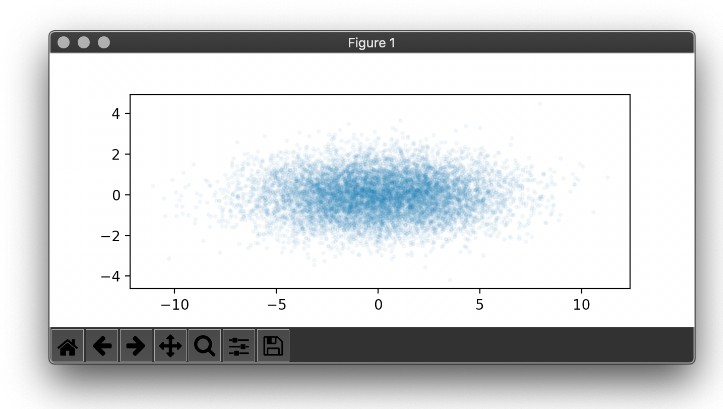VisPy: interactive scientific visualization in Python
Main website: http://vispy.org
VisPy is a high-performance interactive 2D/3D data visualization library. VisPy leverages the computational power of modern Graphics Processing Units (GPUs) through the OpenGL library to display very large datasets. Applications of VisPy include:
- High-quality interactive scientific plots with millions of points.
- Direct visualization of real-time data.
- Fast interactive visualization of 3D models (meshes, volume rendering).
- OpenGL visualization demos.
- Scientific GUIs with fast, scalable visualization widgets (Qt or IPython notebook with WebGL).
Using VisPy
VisPy is a young library under heavy development at this time. It targets two categories of users:
- Users knowing OpenGL, or willing to learn OpenGL, who want to create beautiful and fast interactive 2D/3D visualizations in Python as easily as possible.
- Scientists without any knowledge of OpenGL, who are seeking a high-level, high-performance plotting toolkit.
If you’re in the first category, you can already start using VisPy. VisPy offers a Pythonic, NumPy-aware, user-friendly interface for OpenGL ES 2.0 called gloo. You can focus on writing your GLSL code instead of dealing with the complicated OpenGL API – VisPy takes care of that automatically for you.
If you’re in the second category, we’re starting to build experimental high-level plotting interfaces. Notably, VisPy now ships a very basic and experimental OpenGL backend for matplotlib.
Installation
Please follow the detailed installation instructions on the VisPy website.
Structure of VisPy
Currently, the main subpackages are:
- app: integrates an event system and offers a unified interface on top of many window backends (Qt4, wx, glfw, IPython notebook with/without WebGL, and others). Relatively stable API.
- gloo: a Pythonic, object-oriented interface to OpenGL. Relatively stable API.
- scene: this is the system underlying our upcoming high level visualization interfaces. Under heavy development and still experimental, it contains several modules.
- Visuals are graphical abstractions representing 2D shapes, 3D meshes, text, etc.
- Transforms implement 2D/3D transformations implemented on both CPU and GPU.
- Shaders implements a shader composition system for plumbing together snippets of GLSL code.
- The scene graph tracks all objects within a transformation graph.
- plot: high-level plotting interfaces.
The API of all public interfaces are subject to change in the future, although app and gloo are relatively stable at this point.
Genesis
VisPy began when four developers with their own visualization libraries decided to team up: Luke Campagnola with PyQtGraph, Almar Klein with Visvis, Cyrille Rossant with Galry, Nicolas Rougier with Glumpy.
Now VisPy looks to build on the expertise of these developers and the broader open-source community to build a high-performance OpenGL library.








